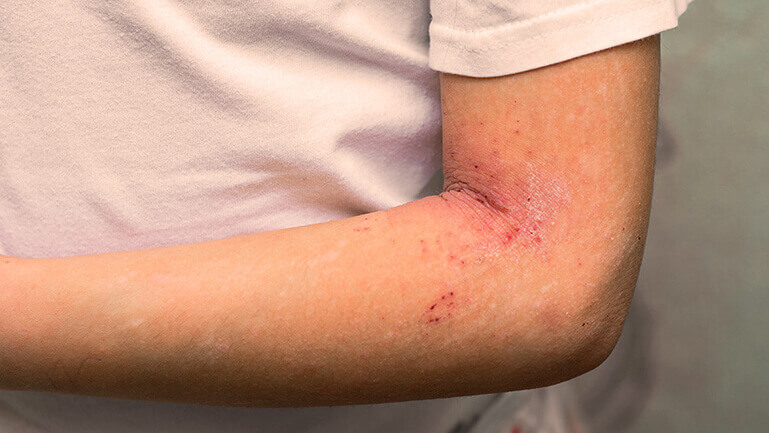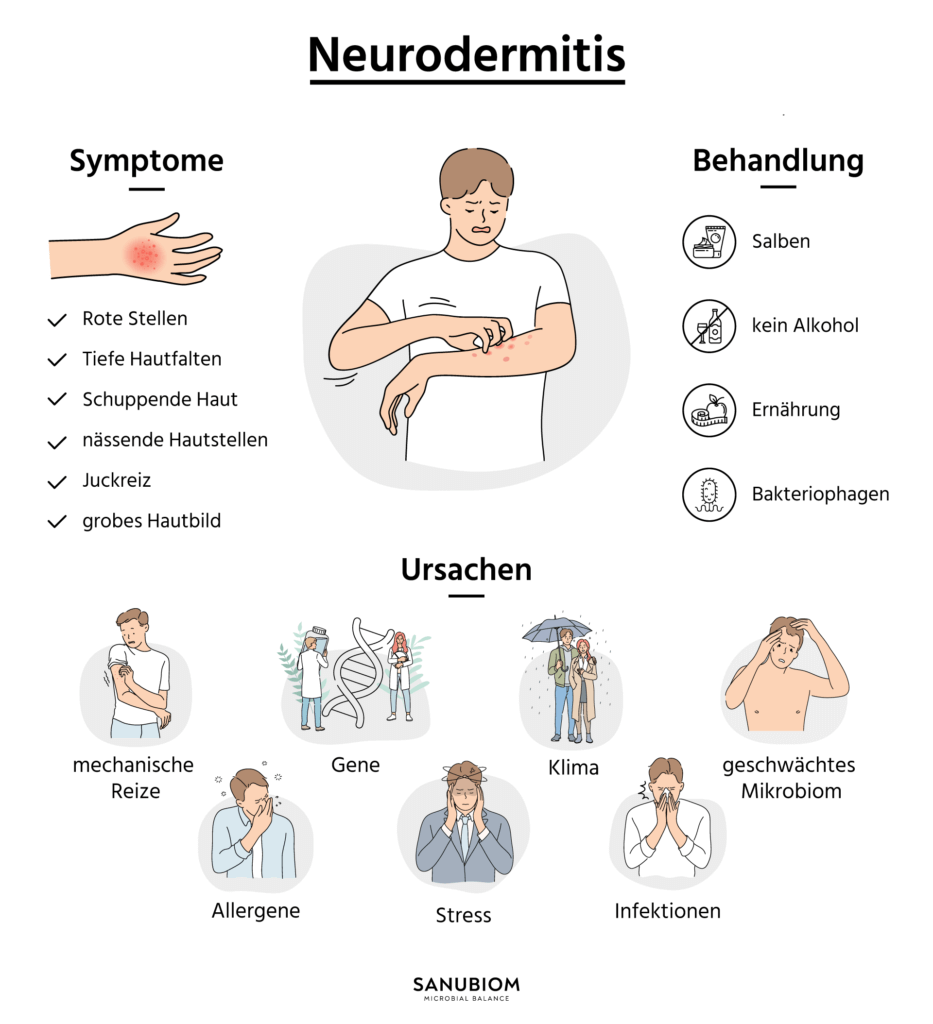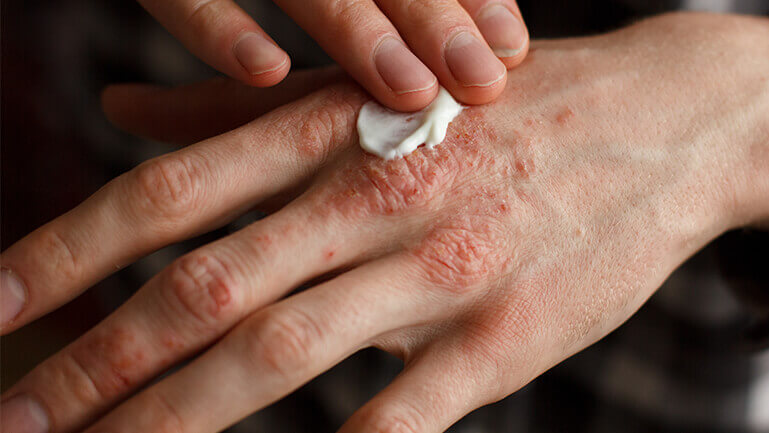Stärke deine Haut
mit Sanubiom SkinCare Protect mit Phage Technology
- REDUZIERT Rötungen und Juckreiz
- FÖRDERT das Gleichgewicht der Haut
- STÄRKT die Hautschutzbarriere
Neurodermatitis

Itchy, red, flaky skin? These can be signs of the insidious skin disease atopic dermatitis. Neurodermatitis (also known as “atopic dermatitis“) is one of the most common skin diseases of our time.
The skin of people with atopic dermatitis rebels: redness, dryness and, above all, agonizing itching are typical symptoms suffered by those affected. However, the exact causes are still a headache for doctors today.
We are often familiar with the skin disease in babies with scaly neurodermatitis scalp, whereas in adults it tends to appear as unsightly rashes on the face and hands.
The term “neurodermatitis” comes from the Greek. “Neuro” means nerve, “derma” is the skin and the suffix “-itis” indicates an inflammatory process. The disease therefore owes its name to the fact that in the past, medicine wrongly assumed that inflammation of the nerves was the cause.
Although this assumption has since been refuted, the name “atopic dermatitis” is much more common than the medically correct terms “atopic eczema” and “atopic dermatitis“.
The term “atopic” goes back to the Greek “atopia”, which means placelessness. Anyone who suffers from neurodermatitis knows that the term hits the nail on the head. After all, the symptoms can occur more or less on every conceivable part of the body.
It is a genetic disease in which the skin is virtually leaky and can no longer fulfill its role as a protective barrier.
As a result, allergens and irritants from the environment can penetrate more easily and the immune system becomes overactive, making those affected more prone to allergic reactions.

There is still no scientific consensus on the cause of neurodermatitis of the eye. A genetic disorder of the skin barrier can be the trigger for inflammatory skin changes. Psychological factors such as stress also play a role
Where exactly atopic dermatitis occurs and how severe it is varies from person to person. Nevertheless, there are some key symptoms that occur in a comparable form in sufferers of different age groups and by which atopic dermatitis can be recognized.
The course of the disease is characterized by relapses. To simplify matters, you can imagine the development of atopic dermatitis in the form of a wave: the symptoms are at their worst at the top of the wave crest. This is referred to as an acute attack.
Afterwards, the discomfort will subside and the skin can recover a little. So we have arrived in the valley of the wave. Such acute episodes and periods of recovery follow each other continuously. During the resting phases, there may be no symptoms at all or only dry skin.
Age plays a decisive role in the individual course of atopic dermatitis. Atopic dermatitis therefore progresses differently in children than in adults. Due to the constant stress, those affected not only suffer from the symptoms themselves, but also from anxiety disorders or depression.
mit Sanubiom SkinCare Protect mit Phage Technology
Probiotic
Skin protection

Like the clinical picture itself, the triggers for neurodermatitis are varied. If you have a genetic predisposition, symptoms do not necessarily occur. However, it is usually only a matter of time before certain triggers trigger atopic dermatitis flare-ups.
In addition to excessive hygiene, the most important influencing factors include allergens. These are irritants that are absorbed from the environment or through food and provoke an allergic reaction.
In winter in particular, the severe cold and dry conditions put a great strain on our skin. The sun can also have negative effects on the skin due to UV radiation and UV light.
If this is already impaired by an illness with atopic dermatitis, the extreme weather conditions can not only trigger symptoms, but even make them worse.
If itching is severe, the skin flora is often out of balance. This is caused by an excess of inflammation-promoting bacteria on the skin, mostly Staphylococcus aureus .
The so-called phage technology relies on the use of phages. These phages are also called bacteriophages and are specialized in recognizing and dissolving bad bacteria on the skin. 1
This gives the good bacteria space again, the skin can calm down and feelings of tension, redness and itching are reduced.
Author: Christian Unterlechner, Dipl.-Ing. (FH), MBA
“From our own experience with neurodermatitis – and the long path of suffering associated with skin conditions like this – we started to look for alternative solutions to drug treatments. We are very happy to share the knowledge and experience that has gone into the years of developing our SkinCare products with you.”
Share post